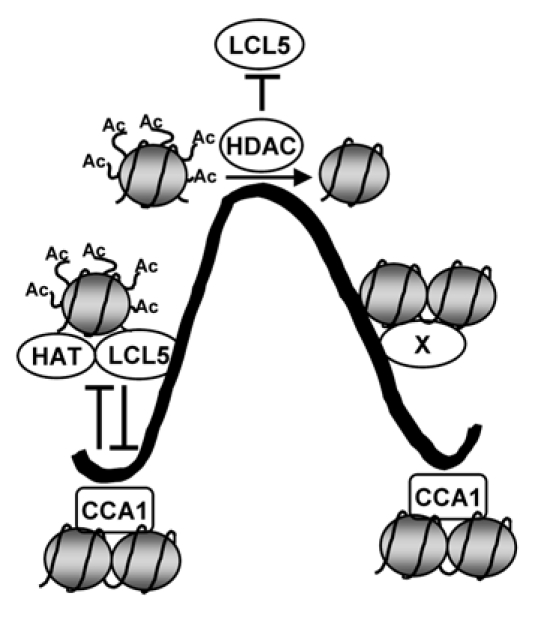Figure 1.

Schematic representation depicting the rhythmic regulation of TOC1 expression. CCA1 contributes to TOC1 repression at dawn most likely by antagonizing HAT activities and favoring a hypo-acetylated state of H3. Decreased CCA1 binding throughout the day together with the counteracting function of RVE8/LCL5 and HAT activities allow transcriptional activation by facilitating histone acetylation. After TOC1 peak of expression, HDAC activities interfere with HAT/LCL5 activating function, promoting the switch to repressive chromatin structures and contributing to the declining phase of TOC1 waveform. Additional unknown factors and mechanisms of circadian gene regulation (X) can account for TOC1 declining phase until a rhythmic cycle starts again with CCA1 binding. The thick black line represents TOC1 circadian waveform; nucleosomes are shown as gray circles with the H3 N-terminal tails as black, curved lines; lines ending in perpendicular dashes indicate antagonistic function.
